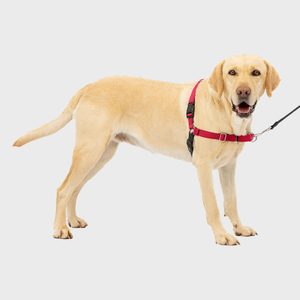How to Adopt a Dog and Prepare for a New Dog’s Arrival
Updated: Mar. 12, 2024
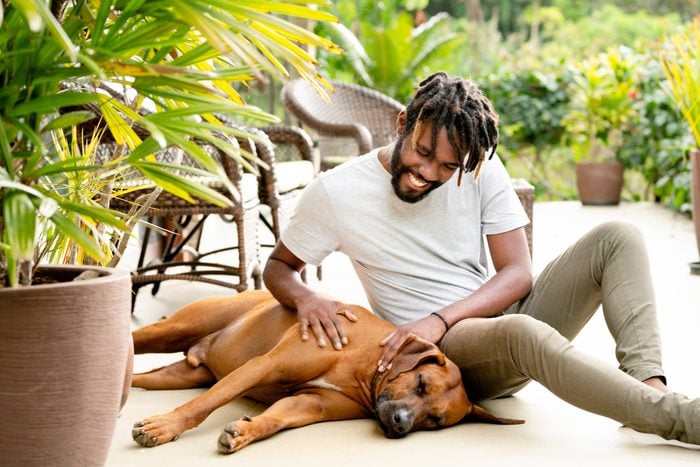
Adopting a rescue dog is an incredibly rewarding experience, especially if you plan ahead to create a loving home for your new pet. Here's a guide to how to adopt a dog.
If you’re thinking of adding a fur baby to your family and wondering whether and how to adopt a dog, we urge you to start with this oft-repeated quote from author and animal advocate Karen Davison: “Saving one dog will not change the world, but surely for that one dog, the world will change forever.”
We couldn’t agree more. Adopting a dog (or cat) from a shelter or rescue group not only yields benefits for the adopter and the lucky dog in need of a home, but it also benefits overcrowded shelters. Julie Castle, CEO of Best Friends Animal Society, the nation’s largest sanctuary for homeless animals, says that in 2021, approximately 355,000 dogs and cats were killed in shelters. While this is down from the millions per year being euthanized prior to efforts by Best Friends and other organizations, Castle says “it was the first time in five years that we’ve seen the number of dogs and cats killed in U.S. shelters rise (from 347,000 to 355,000). Choosing to adopt,” she adds, “saves two lives: the pet you adopt and the one you make space for in the shelter.”
Shelters and rescue groups, including breed-specific rescues, can help you find the right pet for your lifestyle, the dog (or dogs!) most suited to kids, a loyal dog breed or a lovable mutt, and also help you understand the cost of owning a dog. Here, we walk through the questions you should ask yourself before adopting a dog, the steps involved in the adoption process and how to prepare your home—and yourselves—to welcome your new canine family member.
What to expect when adopting a dog
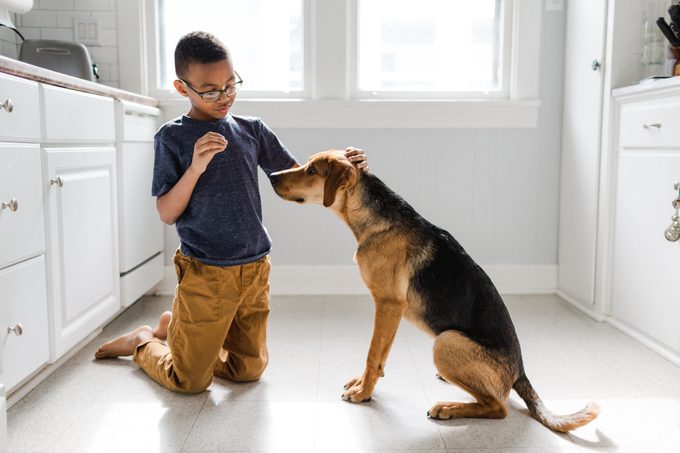
Before you adopt a rescue dog, you need to carefully consider whether your situation and lifestyle are suited to a new pet, and whether you’re really ready for the 10- or even 15- to 20-year commitment that dog ownership brings. Consider the following aspects of adoptive dog ownership as you decide whether it’s the right path for you.
Do you have the time and resources for a dog?
Dogs require time, money and affection. That last one may be the easiest to give, but finding enough time for walks, leash-training, acclimating and house-training your dog takes effort. In addition to dog food, a dog bed, treats and squeaky toys, veterinarian visits, routine vaccinations and, if necessary, professional dog training are all expenses you’ll need to consider.
Training takes time and patience
Even if the dog you adopt isn’t a puppy, and even if he had a previous owner, he probably picked up some bad habits while he was up for adoption. Improper urination, chewing, jumping and pulling on the leash are all super common behavior problems in rescue dogs (especially pups who may never have had obedience—or potty—training), but they are also correctable. Consistent training is important in establishing new habits and teaching your new rescue his boundaries and the rules of his new “pack.” Your pup also might be acting out because they aren’t getting what they want; read the things your dog actually wants from you (hint: a lot of attention).
You’ll both need time to adjust
Many dogs wind up in shelters with no track record or history, and it’s impossible for them to tell us what they’ve been through. “Even coming from a great shelter or a wonderful foster home, a newly adopted dog has been through a lot of changes,” Castle says. They left their previous home and may have entered a shelter environment with a lot of other dogs, and for some, this may be the first time they’re separated from their mom and litter mates, all of which can be stressful. “When they are adopted, dogs need time to decompress, learn a new routine, meet new human and animal friends, master the rules and feel safe and secure in their new home,” she says. You’ll also need time to learn their quirks and preferences. It may also take time for a new dog to warm up to other animals in the house, so give the dog, and yourself, time to adjust.
You may need to get your pup spayed and neutered
In order to reduce the number of homeless pets, most reputable rescue organizations require that dogs and cats be spayed or neutered. This may be mandatory before your pet leaves the shelter or soon after you’ve brought it home. If the shelter doesn’t have the resources to handle the surgery, they should be able to recommend a low-cost spay/neuter clinic or a veterinarian who offers low-cost surgery.
Does your housing allow dogs?
Housing issues, particularly large-breed or breed-specific bans, are the No. 1 reason for owner surrender of dogs to animal shelters, says Castle. Before you get your heart set on a dog of any size, and especially if you’re a renter, make sure your property allows dogs. Even some HOAs have breed-specific bans, so be sure to check before you adopt.
How much does it cost to adopt a dog?
Castle explains that when you adopt a pet, “you’re saving money, as adoption is a more economical choice than purchasing.” Most shelters and rescue groups apply adoption fees that cover spay or neuter surgery, a health exam, vaccinations, a microchip and, occasionally, a starter kit of doggie gear. Fees will vary based on the shelter or group, Castle says, and can range from $0 (during special adoption drives) to $350, depending on the individual pet. Some places will waive or greatly reduce fees for older dogs, dogs that have been at the shelter a long time or dogs with special health needs. If you’re adopting from a nonprofit, this fee may be considered a donation and, as such, would be tax deductible.
How to adopt a dog
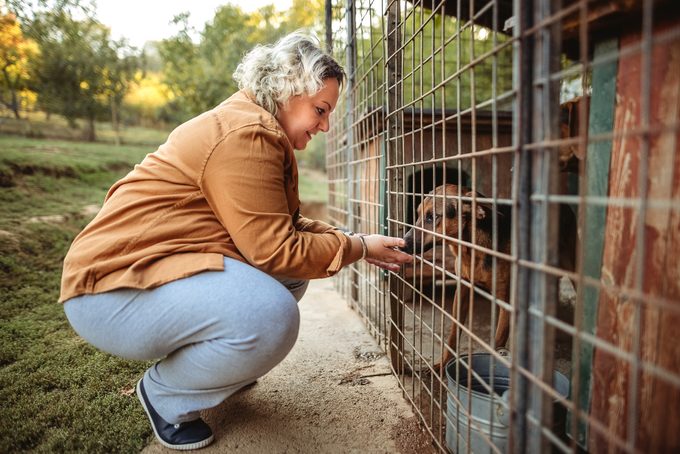
Adopting a new rescue pup is seldom a spur-of-the-moment act, but rather one that can take days, weeks or even months. Here are the steps involved.
Where can you get a dog?
“There are so many places you can find a rescue dog,” says Nicole Savageau, DVM, a veterinarian with The Vets mobile pet health service. “There are local shelters, the ASPCA, local rescue groups and breed-specific rescue groups.”
You may also find private owners looking to rehome a pet, sometimes via Craigslist or social media. Castle says that, unfortunately, “since the beginning of the pandemic, increases in puppy sales and online purchasing have created an ideal environment for internet scammers and inhumane puppy suppliers to break the hearts and bank accounts of online pet purchasers.” She adds that “it’s important for people to meet their new pet in person before exchanging money, so we urge people to stop by their local shelter or rescue group to fall in love with a pet in need.” She recommends looking for a Best Friends Network Partner shelter or checking on PetFinder. If you do opt for a private adoption, make sure you can visit the pet first, and try to adopt through someone who is known to your friends or relatives.
Determine what you want
You may walk into a shelter and fall in love with the first pair of puppy dog eyes that lock with yours, or you may have a more specific dog in mind. If you’re thinking of a particular breed, Dr. Savageau says you should “definitely research the characteristics and personality traits of the breed” and points out that while shelter animals are often mixed breeds, usually there are at least one or two prominent breeds in an individual dog. She says adopters should research around the following questions:
- Is it a breed that needs a lot of exercise and has a ton of energy?
- Is it a breed that is more content being a couch potato?
- Is it a breed that is good with children or other animals?
Dr. Savageau points out that while there are breed-specific traits, “every dog is an individual, so it is always good to ask the shelter or rescue group what personality traits the specific dog you are looking to adopt has been showing. Sometimes this can be hard to assess in a shelter situation, because they can be very scared and nervous with so many other animals around.”
Other points to consider are whether you want a large dog, or a small or medium-size dog, whether you prefer a short-haired or long-haired dog, and whether you’re open to adopting an older dog.
All that said, it’s important to approach dog adoption with an open mind. You may picture yourself romping with a German Shepherd puppy but instead fall for an adorable mixed-breed adult dog that needs your love—just look at these darling before-and-after dog adoption photos.
Fill out adoption forms
The steps vary from shelter to shelter, but typically, you’ll be asked to fill out an application—which might be extensive—before you look at adoptable dogs. You may be interviewed by a shelter worker, who will ask questions about your work history, whether you rent or own, background on the other individuals living in your home and your history with pets. Depending on the shelter and/or local regulations, you may also be subject to a background check and a home visit.
Once approved, you’ll be able to visit with available dogs and make a request for a specific pet.
Schedule a home visit
Many shelters will require a home visit, where a representative, often a volunteer, makes a brief visit to ensure that the adoptive pet will be going to a safe, clean environment where there are no signs of animal hoarding or abuse, and where any animals present appear to be well cared for and happy. This will happen before you’re allowed to bring the pet home—it may take several days or even weeks between applying for the dog, scheduling a home visit, paying the adoption fee, awaiting spay/neuter surgery, if applicable, and being able to bring your new fur baby home.
How to prepare your home for a new dog
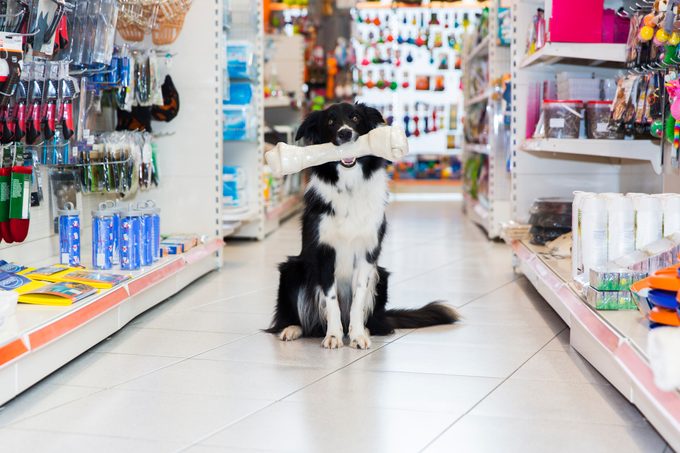
You’ve met your furry soulmate, you’ve been approved for adoption and now comes the fun part—preparing your home and welcoming your new pet to the family. Here are some of the steps you’ll need to take.
Find a vet
Ask friends and neighbors with pets for their recommendations for trusted local veterinarians. Your pup may be perfectly healthy, but it’s a good idea to schedule an office visit just to make sure, as well as to establish a relationship with the veterinary clinic. Plus, puppies may still need to finish up their recommended vaccinations.
Get the gear
At a minimum, you’ll need a dog collar and leash or harness, food and water bowls, a pet bed and, potentially, puppy pads and a training crate. And don’t forget the dog food, dog toys and dog treats! You’ll want these items on hand before your pup trots through your door.
Caution the kids
If you have young children at home, they’re probably beside themselves with excitement at the idea of a new dog joining the family. But lots of little hands and squealing voices may frighten your pup. Make sure the kids know they need to contain their excitement—it’s tough, we know!—and let the dog approach them when it’s ready. Remind them there’s no poking, prodding, picking up or hugging until the pup’s more comfortable with its new family.
Sources:
- Julie Castle, CEO, Best Friends Animal Society
- Nicole Savageau, DVM, veterinarian with The Vets mobile pet health service


